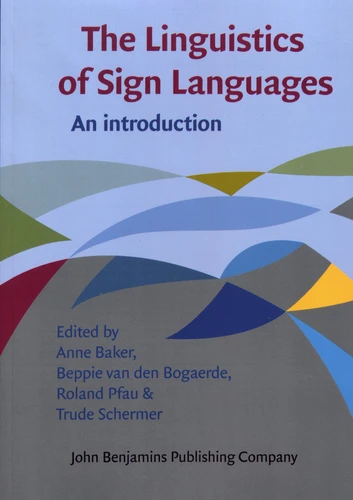The Linguistics of Sign Languages. An Introduction
Par : , , ,Formats :
- Paiement en ligne :
- Livraison à domicile ou en point Mondial Relay indisponible
- Retrait Click and Collect en magasin gratuit
- Réservation en ligne avec paiement en magasin :
- Indisponible pour réserver et payer en magasin
- Nombre de pages378
- PrésentationBroché
- FormatGrand Format
- Poids0.74 kg
- Dimensions17,0 cm × 24,0 cm × 1,7 cm
- ISBN978-90-272-1231-3
- EAN9789027212313
- Date de parution23/06/2016
- ÉditeurJohn Benjamins Publishing
Résumé
How different are sign languages across the world ? Are individual signs and signed sentences constructed in the same way across these languages ? What are the rules for having a conversation in a sign language ? How do children and adults learn a sign language ? How are sign languages processed in the brain ? These questions and many more are addressed in this introductory book on sign linguistics using examples from more than thirty different sign languages.
Comparisons are also made with spoken languages. This book can be used as a self-study book or as a text book for students of sign linguistics. Each chapter concludes with a summary, some test-yourself questions and assignments, as well as a list of recommended texts for further reading. The book is accompanied by a website containing assignments, video clips and links to web resources.
Comparisons are also made with spoken languages. This book can be used as a self-study book or as a text book for students of sign linguistics. Each chapter concludes with a summary, some test-yourself questions and assignments, as well as a list of recommended texts for further reading. The book is accompanied by a website containing assignments, video clips and links to web resources.
How different are sign languages across the world ? Are individual signs and signed sentences constructed in the same way across these languages ? What are the rules for having a conversation in a sign language ? How do children and adults learn a sign language ? How are sign languages processed in the brain ? These questions and many more are addressed in this introductory book on sign linguistics using examples from more than thirty different sign languages.
Comparisons are also made with spoken languages. This book can be used as a self-study book or as a text book for students of sign linguistics. Each chapter concludes with a summary, some test-yourself questions and assignments, as well as a list of recommended texts for further reading. The book is accompanied by a website containing assignments, video clips and links to web resources.
Comparisons are also made with spoken languages. This book can be used as a self-study book or as a text book for students of sign linguistics. Each chapter concludes with a summary, some test-yourself questions and assignments, as well as a list of recommended texts for further reading. The book is accompanied by a website containing assignments, video clips and links to web resources.






















